Best bass drum pedals 2025: single and double bass pedals for every budget
Put your best foot forward with our guide to choosing the best bass drum pedal for you, with expert picks from DW, Pearl, Tama and others
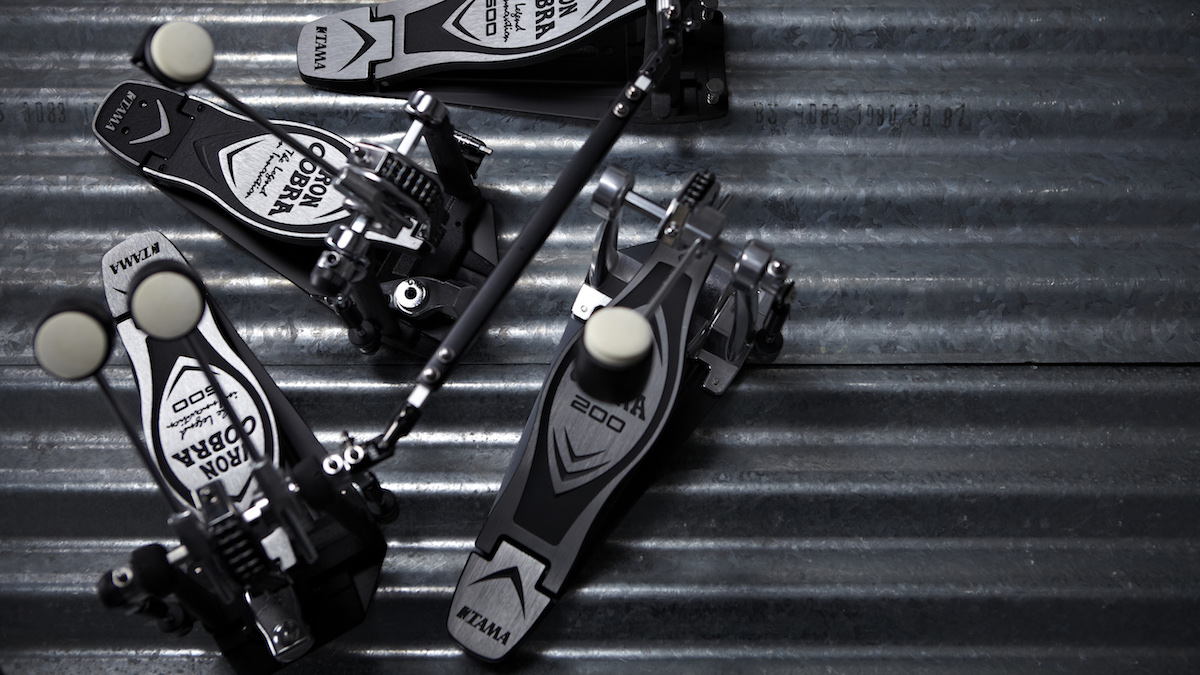
Besides your drumsticks, your pedals are the most crucial link between you and your kit. With the kick drum being such a central aspect of all drumming styles, it's important that you have the best bass drum pedal for the task.
Just like your sticks, the type of pedal and beater you choose is a hugely personal thing, and finding the best bass drum pedal for you can dramatically impact (and hopefully improve) the way you play.
With such a huge range of pedal brands, pedal types and price ranges to choose from, it can be hard knowing which pedal to go for. This guide is designed to help you zero in on the best one for you - from chain, direct or belt-drive, to single and double variants. Other notable features to consider are the cam type that shapes the way the beater moves through its travel, plus footboard length, beater type and more.
It’s likely that a pedal upgrade will be a fairly long-term investment for you, so it's important to find a pedal which feels comfortable to play and complements your playing style. In this guide our experts have taken a look at the best bass drum pedals currently on the market, with options for every budget.
We've included some in depth buying advice at the end of this guide too, so if you'd like to learn more, click the link. If you'd like to get to the products, keep scrolling.
Best bass drum pedals: Our top picks
For flexible options and a pro-quality combination of speed and power, our opinion is split between the Tama Iron Cobra and DW 5000. However, if you're looking for a chain-driven pedal which offers additional speed and a lighter feel, the Tama Speed Cobra is an excellent alternative.
Pearl's Eliminator Redline also offers great value with its interchangeable cams, while those wishing to (literally) dip their toe into the direct drive pedal world should check out PDP's Concept series, which offers a whole lot of spec for the money.
Best bass drum pedals: Product guide
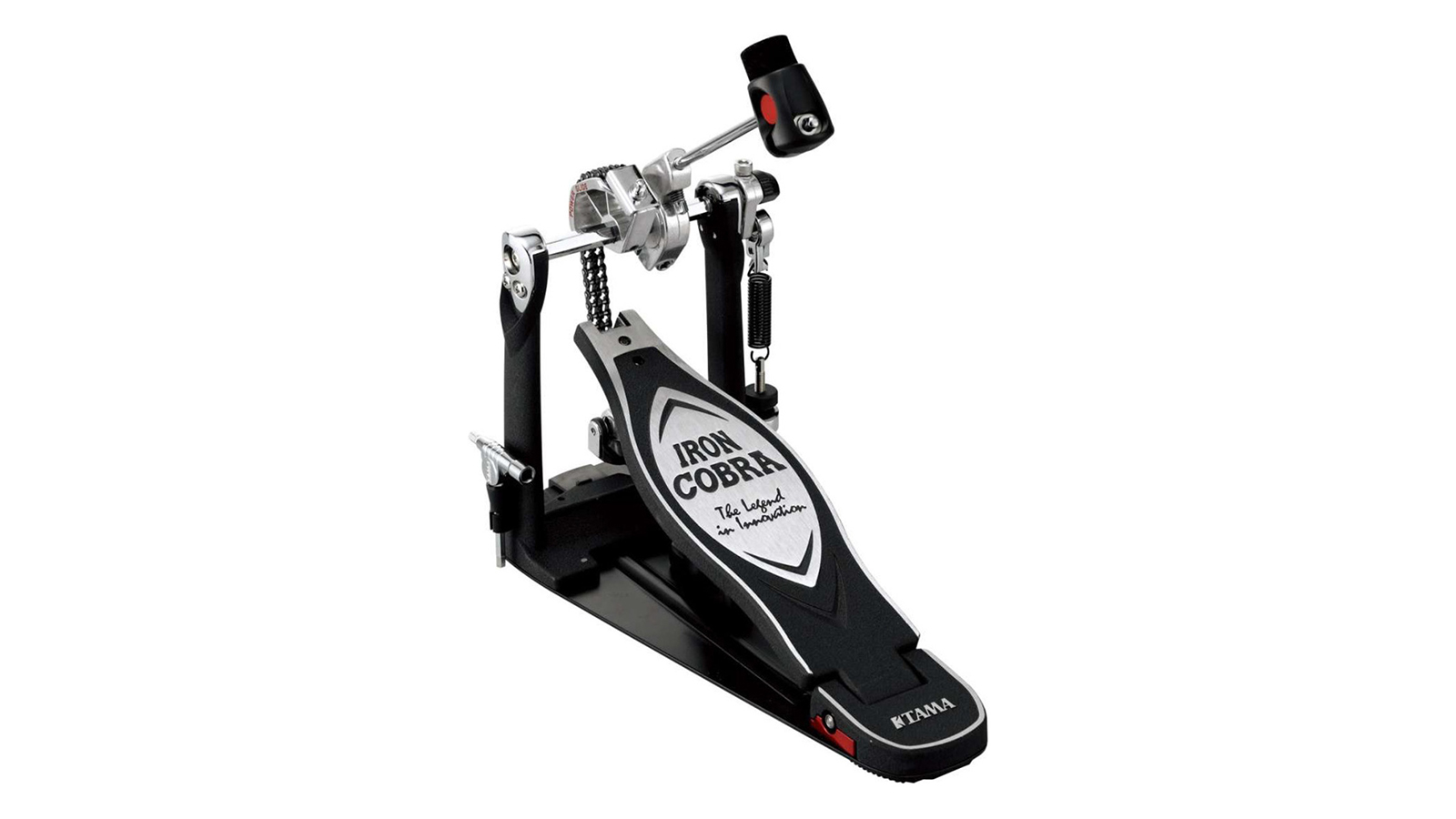
Specifications
Reasons to buy
Reasons to avoid
Since its introduction over 30 years ago, the Iron Cobra pedal has continued to evolve and improve to meet not only the demands of the modern drummer, but also its clear mission statement: "rock solid strength and versatility".
The latest incarnation features a wider footplate and frame to eliminate side-to-side motion, updated lightweight cams (inherited from the Speed Cobra) in both Rolling Glide (linear) or Power Glide (offset) shapes. A smaller Power-Strike beater head design uses dense foam in place of felt for maximum punch. In addition, the Iron Cobra is fitted with Tama’s Cobra Coil to help make the pedal feel lighter, even at higher spring tension settings, and the whole pedal offers plenty of adjustment including beater angle, beater face angle, spring tension, footplate height.
As always, the Iron Cobra 900 series comes in a hardshell plastic case for safe transportation.
Read the full Tama Iron Cobra 900 review
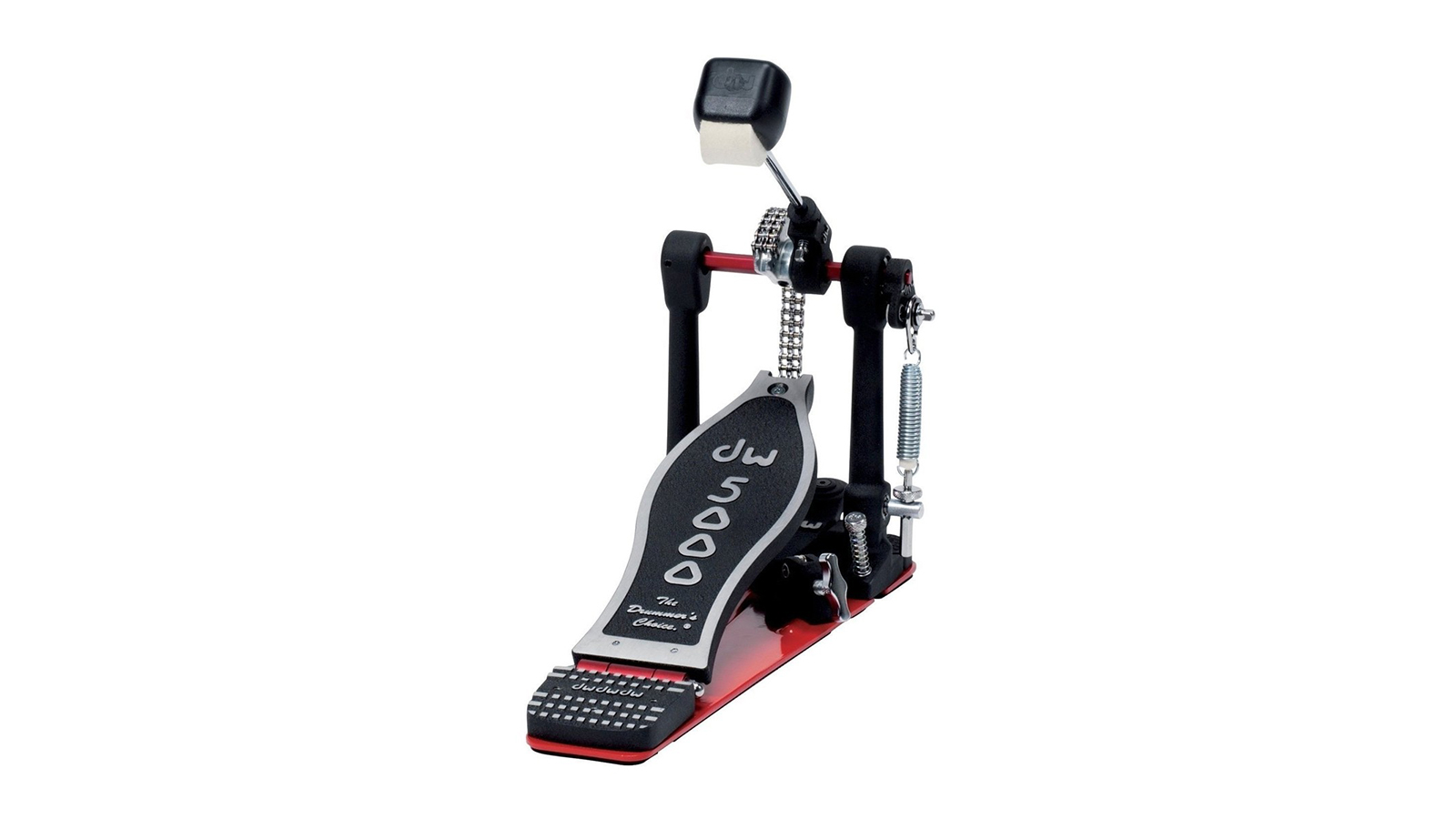
Specifications
Reasons to buy
Reasons to avoid
Like the Tama Iron Cobra, the DW 5000 inherits DNA from the Camco designs of the 60s - both companies have owned the brand name at different times.
Drum Workshop’s current 5000 series pedals are available in a range of options: Accelerator or Turbo Drive, heel-less (5000ADH), extended footboard (5000 XF) and single-chain (5000 AH4). Here we’re focused on the more regular AD4/TD4, which both feature a dual-chain design with either linear or offset cams.
The 5000 is very much a standard in the bass drum pedal market, offering premium power, speed and adjustment. The sturdy baseplate features non-slip rubber to hold the pedal in place, and features such as the Dual-Bearing Spring Rocker, Tri-pivot clamp and single-post design (for easy slave pedal placement) all help the 5000 to fit into your setup and offer all the customisation you could need. It’s a monster of a pedal that should last you years.
Read the full DW 5000 bass drum pedal review
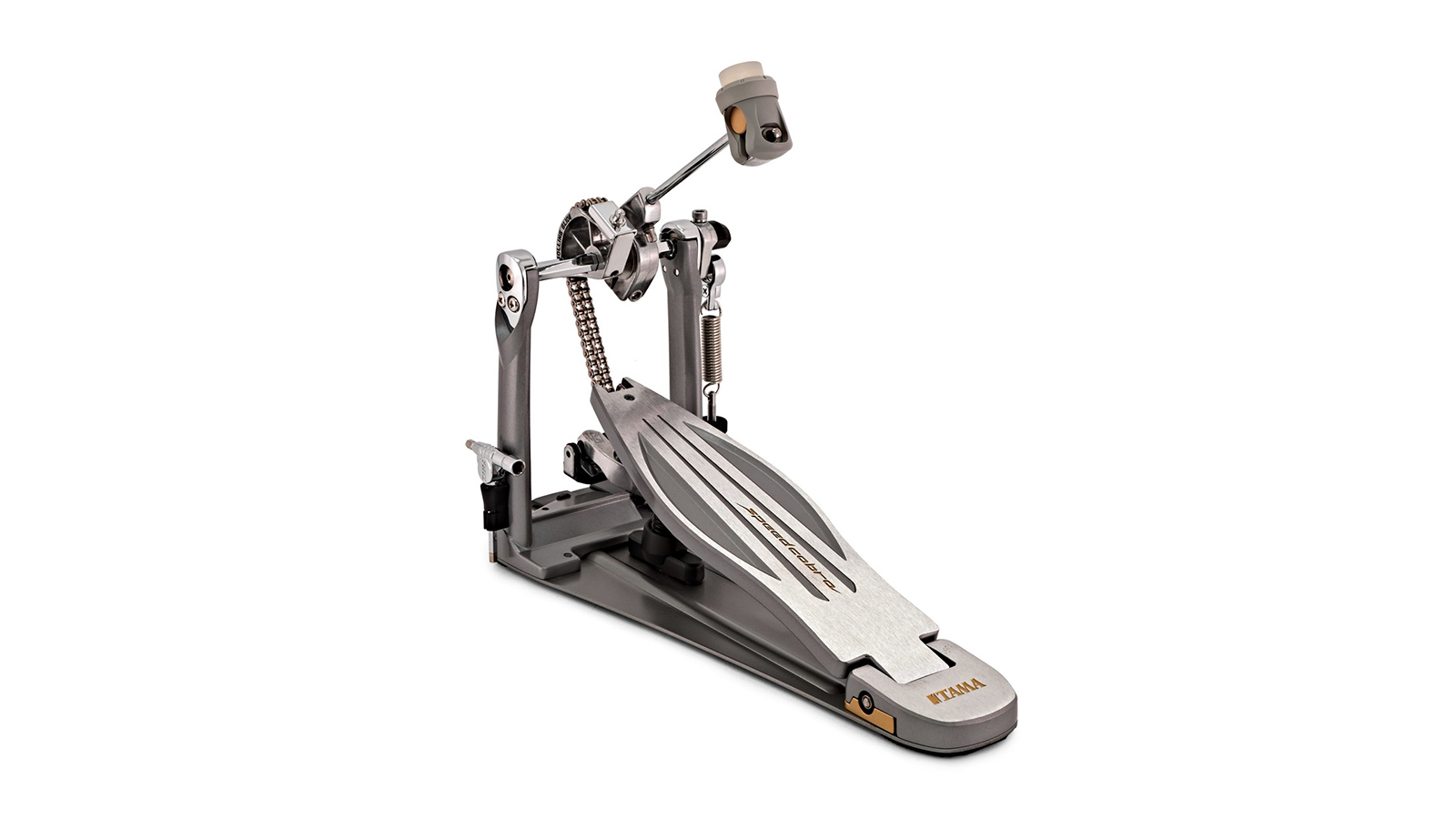
Specifications
Reasons to buy
Reasons to avoid
The Tama Speed Cobra shares many features with the Iron Cobra, such as the Speedo ring, Vari-Pitch beater head, Oiless bearing hinge, Cobra Coil and more. However, the Speed Cobra is designed to feel lighter than the Iron Cobra, with the whole lot geared-up to respond like a Cobra after a couple of shots of espresso.
The footboard is longer, and the pedal is available with Tama’s Rolling Glide cam only. The idea being that the linear response helps maintain higher playing speeds without any additional resistance from the pedal. Unsurprisingly, the Speed Cobra has a lighter feel to the Iron Cobra which is especially useful for double-kick playing.
This pedal is a joy to play and lives up to its name with no difficulty. If you’re after a pedal that’s quick, but aren’t yet ready to give up the weighty feel of a chain-driven pedal we think it could be a revelation. Without a shadow of a doubt, this pedal is impossible to fault. Simply put, it just does its job, as it’s told.
Read the full Tama Speed Cobra review
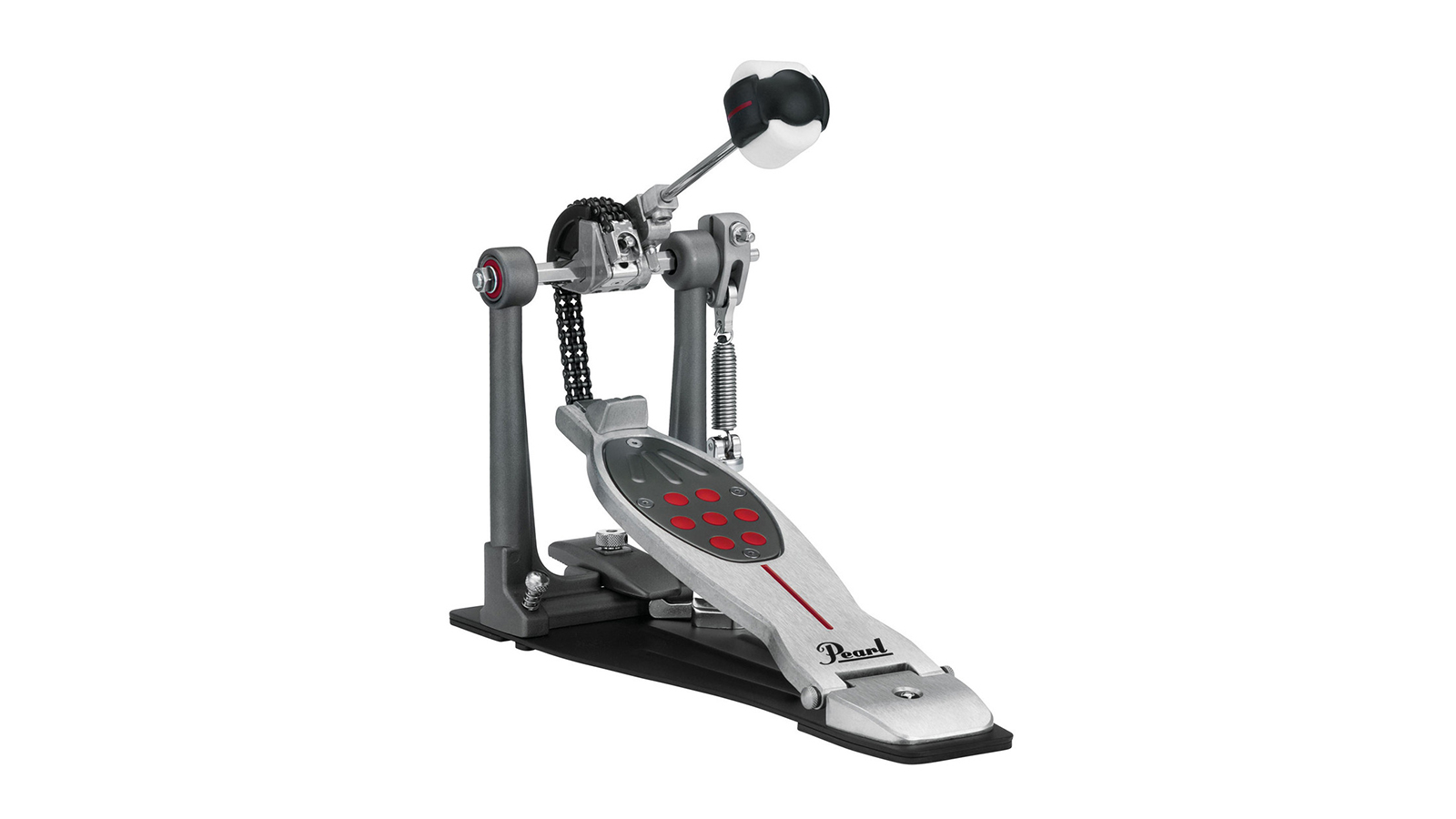
Specifications
Reasons to buy
Reasons to avoid
Pearl's famous Eliminator pedals have become a popular choice among professional and amateur drummers alike, and this popularity can be put down to their trusted reliability and the sheer scope of customisation available. The Eliminator Redline takes this to the next level. Original Eliminator features include the patented interchangeable cams (the pedal comes with four but two others are available) and the 'Powershifter' function which allows the entire footboard to be moved up and down on the base. Shiny ‘Redline’ additions include Control Core Quad beaters (two felt sides and two plastic), Click-Lock Spring Adjustment and NiNja precision axle bearings.
The latter are established skateboard bearings, as used in Pearl's flagship Demon Drive pedals. According to Pearl, this new functionality allows the Redline to perform 85 percent better than its predecessor in velocity testing.
The Redline is available as a chain or belt-drive option, both as single or double versions. Despite the almost infinite scope for customisation, the Redline performs well straight out of the box, with the interchangeable cams really making a difference to the pedal’s feel. It can take a long while to work your way through each variation and choose a preference, but for those willing to tinker away the hours finding their perfect set-up, there really is a pedal for everyone in the Pearl Eliminator Redline.
Read the full Pearl Eliminator Redline review
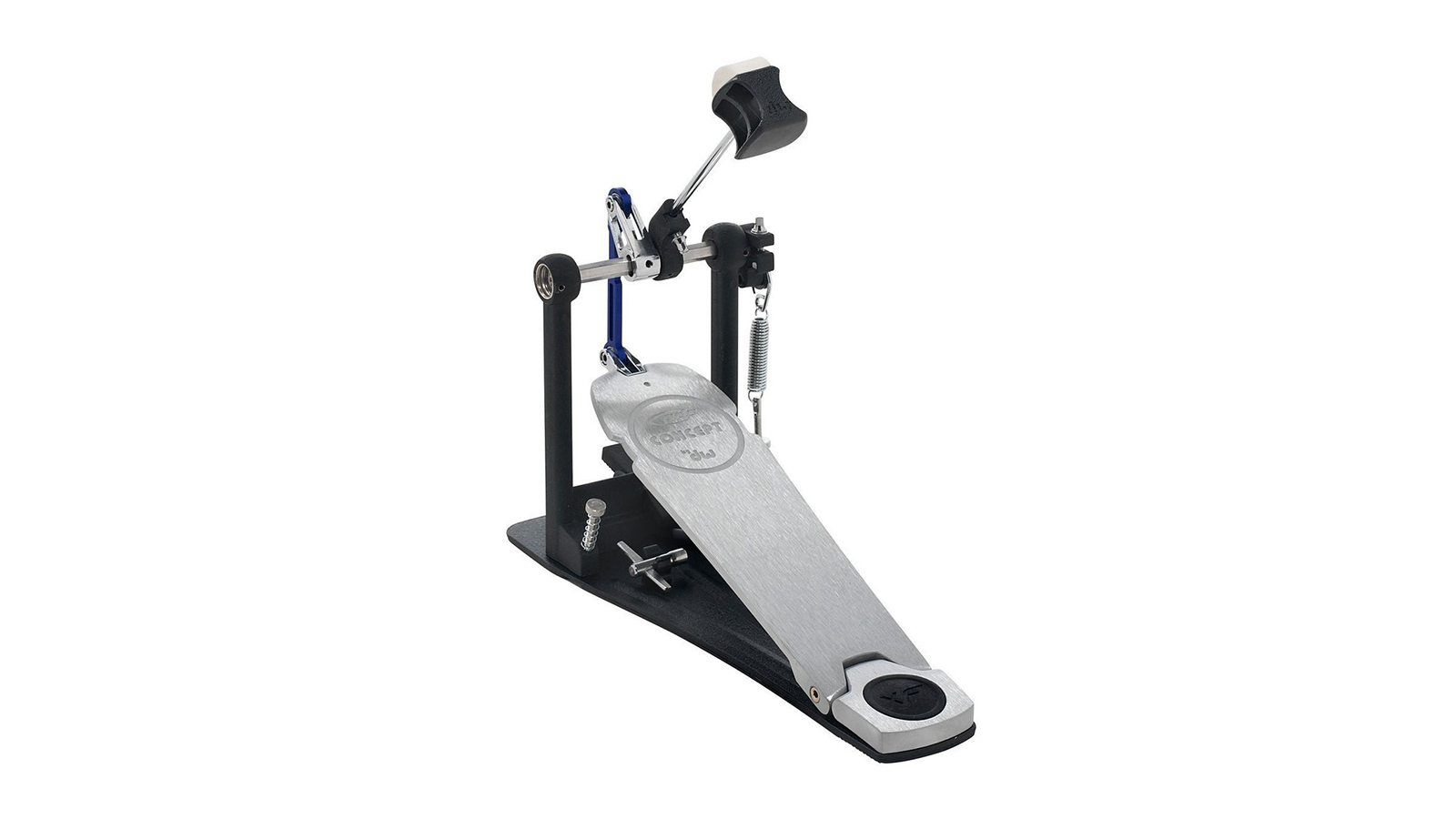
Specifications
Reasons to buy
Reasons to avoid
The Concept Series pedals are available as chain-drive and direct-drive models, although here we’re focusing on the latter. As well as the striking cobalt blue drive linkage, features include XF extended brushed aluminium foot boards, offset toe clamps, retractable spurs, DW air beaters, DW spring rocker adjustment, lightweight black aluminium baseplates and needle bearing hinges.
As you may have noticed, several of these features have been inherited from the pro-level DW models such as the 5000 and 9000. Which, considering these have become commonly recognised as the industry standard for bass pedals, should not be under-appreciated.
The direct drive Concept pedals look great and are comfortable to play. Probably best suited to the mid-level player looking for an upgrade, or as a great first-foray into the world of direct drive pedals.
Read the full PDP Concept bass drum pedals review
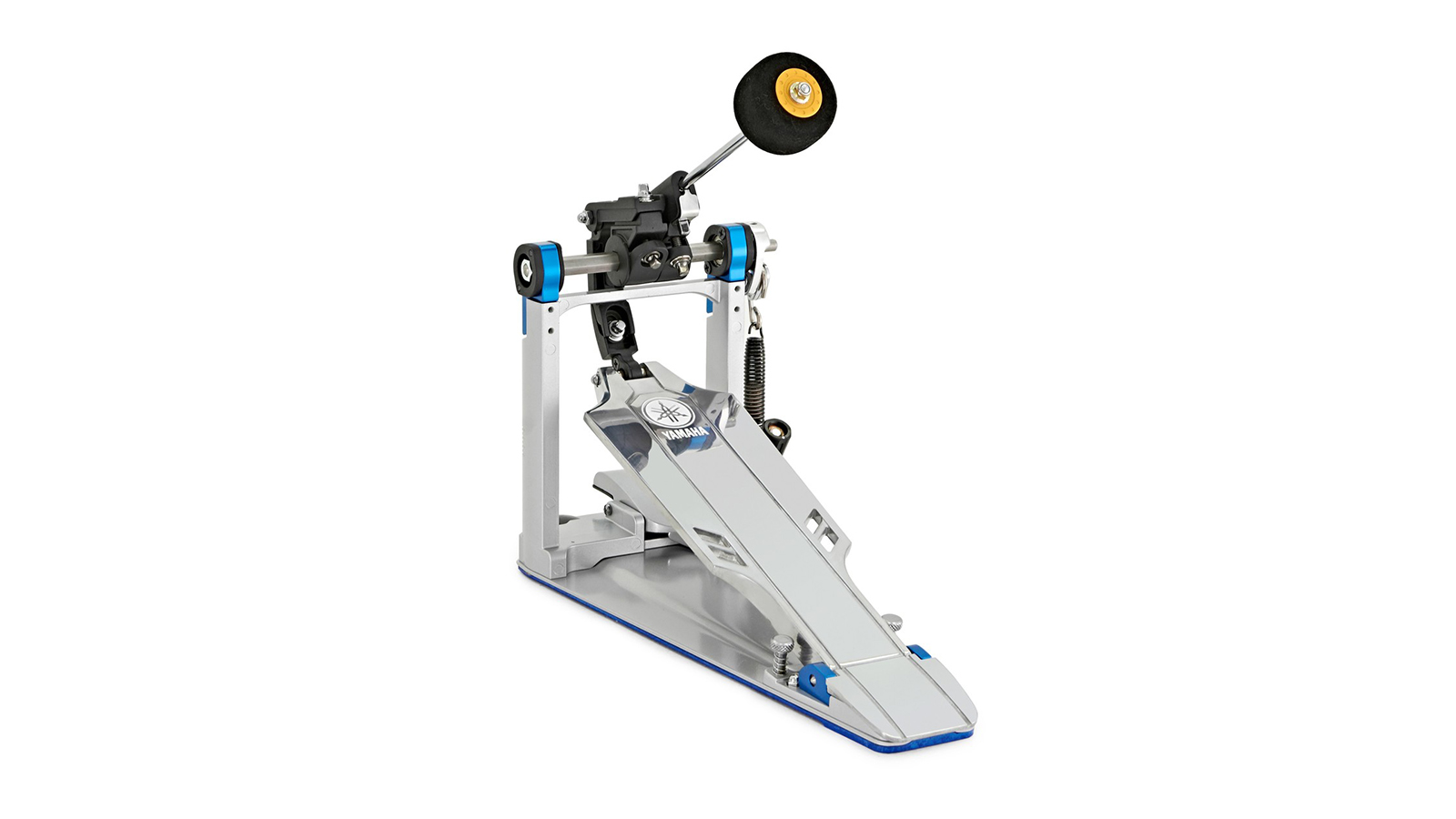
6. Yamaha FP9C bass drum pedal
Our expert review:
Specifications
Reasons to buy
Reasons to avoid
While Yamaha has always produced some of the best hardware across its range of kits, its bass drum pedals have always remained on the safe side, best described as ’solid’ rather than mind-blowing. But the FP9 series changes that, with some high-end features and looks to match.
Available in chain or direct drive versions (priced the same). There’s a flexible level of adjustment available, with independent control of the footboard and beater, plus a sliding control over the cam's response between linear and offset. The springs feature a self-locking system to keep everything secure, and the FP9 comes with beater weights in aluminium and brass for further experimentation.
The whole thing has a cutting-edge, space-age look to it, and we think that whichever flavour of FP9 you choose, it will certainly give some more established pedals a run for their money.
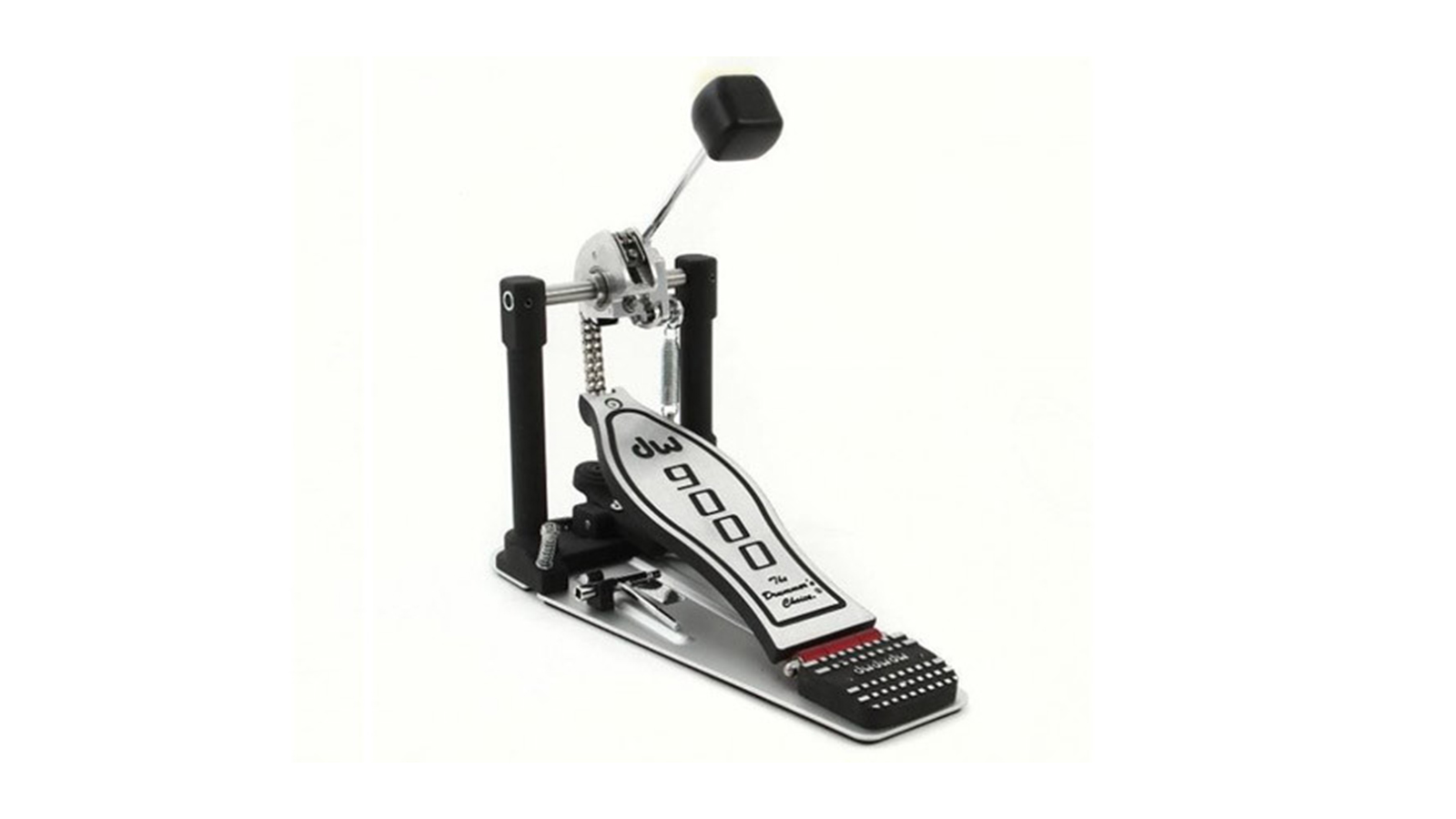
Specifications
Reasons to buy
Reasons to avoid
DW’s flagship 9000 hardware line gives us the 9000 series pedal - which sees it steal some thunder from the faithful 5000. A floating rotor, repositioned spring and near endless adjustment of the drive cam between Accelerator and Turbo settings means that you can really dial in the 9000’s feel.
And if that wasn't enough, DW offer a Pedal Customising Kit with footboard weights and stacker heels with which to adjust the response of the 9000s even further. A nine-position Elevator Heel Plate arrangement is arrived at through the use of three different-sized heel sections that can be used in conjunction with one another - the higher the stack, the greater the control.
So, how do they handle? Well, quite frankly, they're a joy to use. These pedals offer wonderful responsiveness and a grace and elegance that is pretty much unbeatable. Both pedals are rock solid in operation and give the impression that they are working with you.
Read the full DW 9000 series pedal review
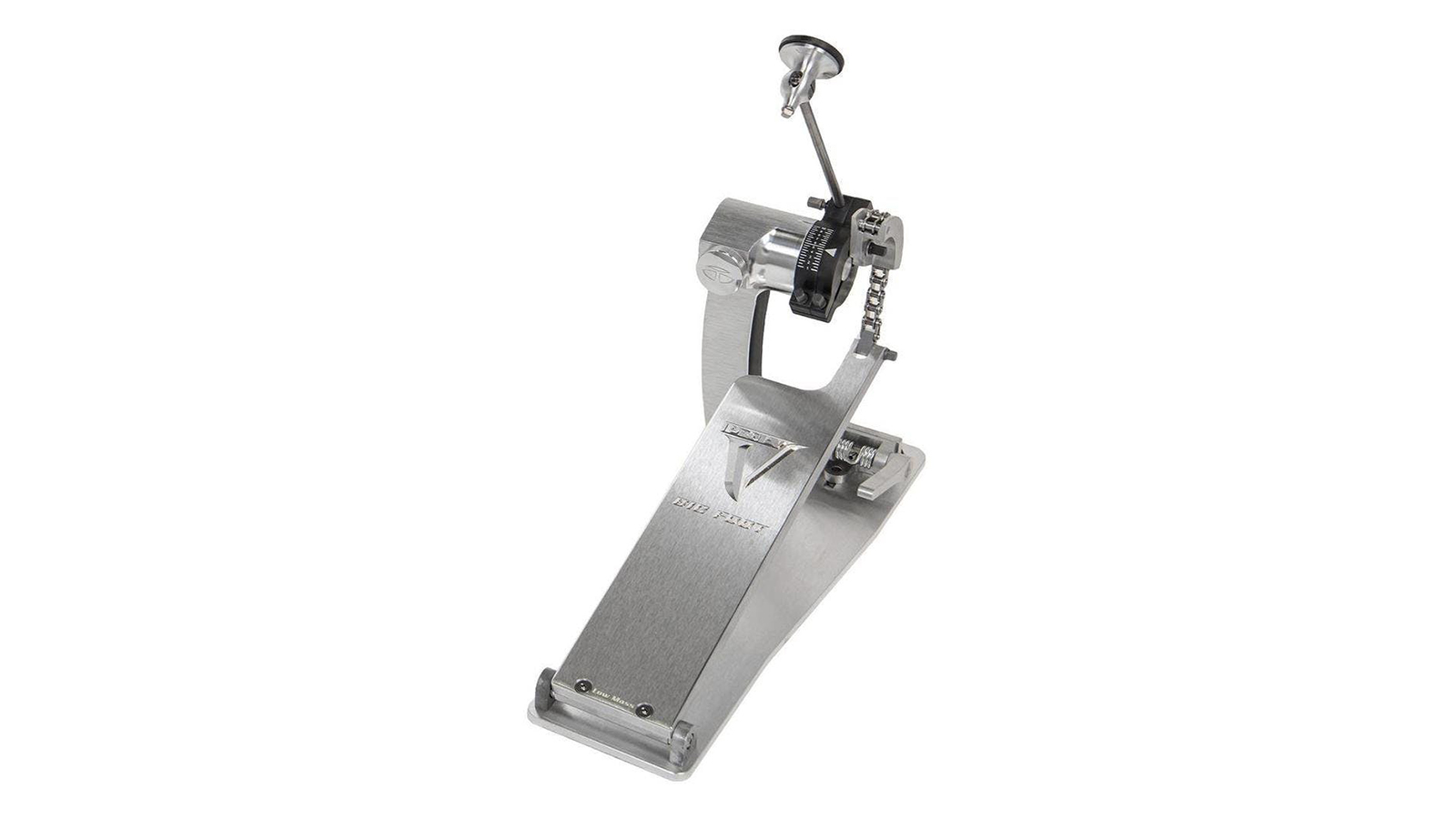
Specifications
Reasons to buy
Reasons to avoid
Trick’s Pro 1-V is a sleek-looking, modern direct-drive pedal built from machined aluminium. A compression spring sits at the heart of the pedal’s feel, and all moving points incorporate ball bearings to maximise the smooth action of the pedal. The use of compression springs has also allowed Trick to build in a design feature that allows for extremely quick and easy tension adjustment. Grab hold of the knurled knobs and give them a turn in order to firm up or slacken pedal feel. It´s that simple.
Directness of response and consistency of the pedal feel is remarkable and the Pro 1-Vs feel as though they’re attached to your brain rather than your feet.
The refreshingly easy manner in which you can set up and alter the feel of the Pro 1-Vs makes them of real interest to anyone with a pocket to cope with the prices. Yes, these are expensive propositions, but cutting-edge design and engineering never came cheap.
Read the full Trick Pro 1-V review
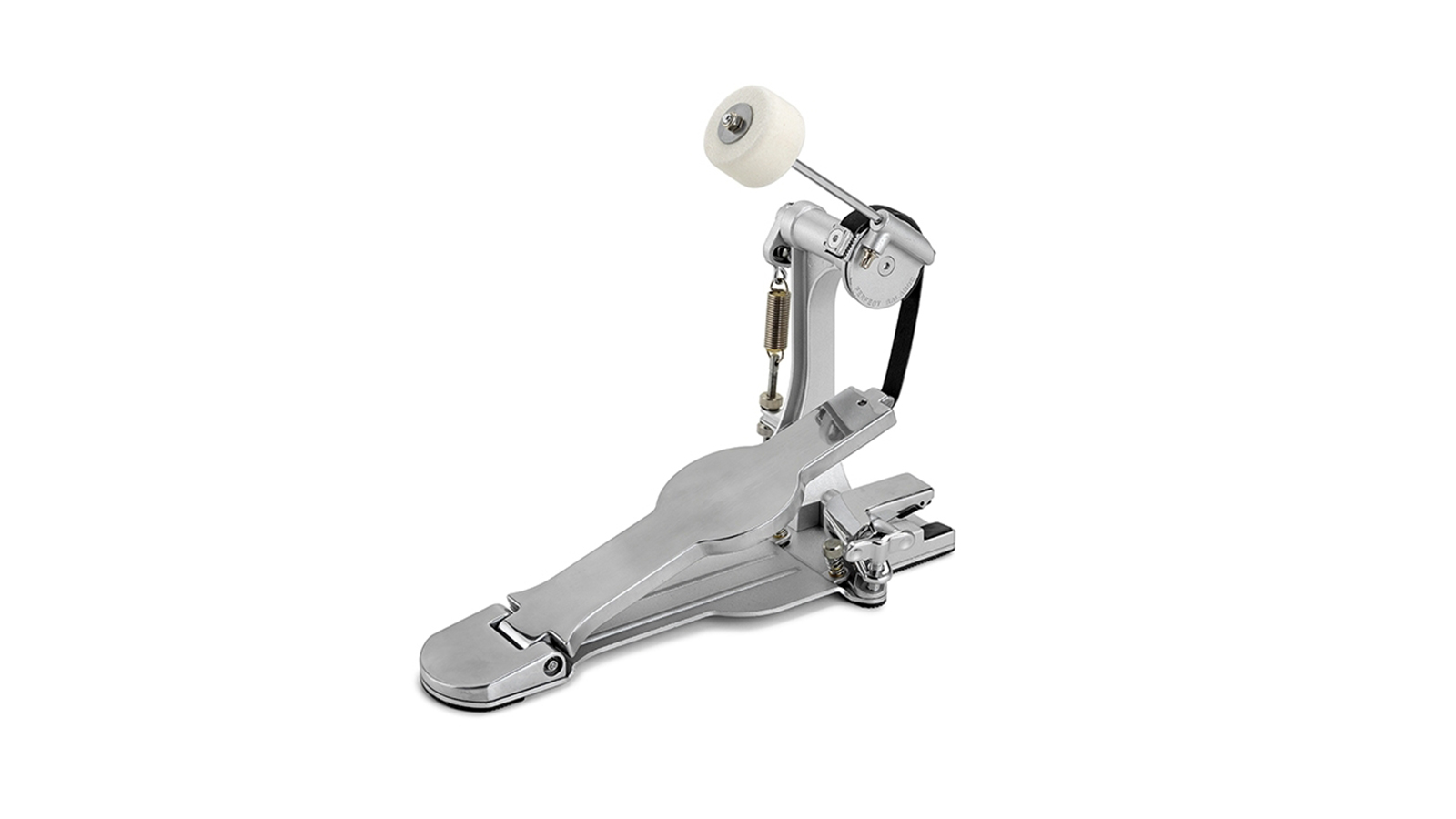
9. Sonor Perfect Balance Standard bass drum pedal
Our expert review:
Specifications
Reasons to buy
Reasons to avoid
Sonor’s Perfect Balance Standard pedal takes the blueprint of Jojo Mayer’s signature pedal and simplifies it further. It’s a belt-driven pedal, available as a single pedal only and Sonor has done away with the folding mechanism of Jojo’s signature pedal. Other changes include an un-etched heel plate, and an un-polished footboard.
What remains is the same drive design, which aims to deliver the, ahem… perfect balance between the beater’s forward motion and rebound. The Perfect Balance mirrors your foot movement for a silky-smooth action that’s a great option for those looking for a pedal without too many bells and whistles, while maintaining high-level performance.
Read the full Sonor Perfect Balance pedal review
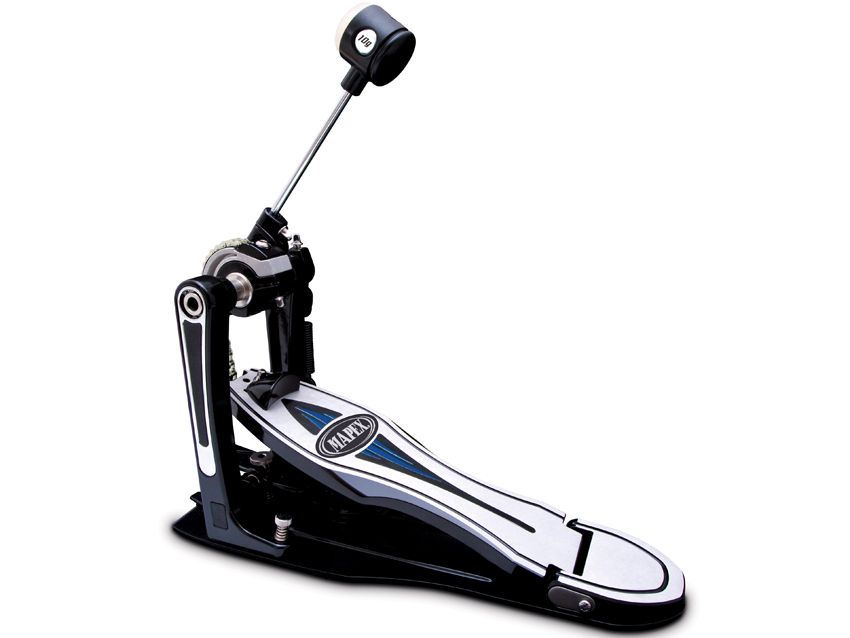
Specifications
Reasons to buy
Reasons to avoid
Mapex takes a big step forward with the Falcon single (PF1000) and double (PF1000TW) bass drum pedals. It comes with two cams – linear and offset – which can be swapped in a couple of minutes, and overall the pedal feels light to play (although fairly heavy, physically).
For heels-up players, the pedals are ideal. The slim footboard is great for pulling your toes half-way down the board and stomping. It almost wills you to play faster. While for heels-down we found if we shoved our toes up under the stop our average size 9s sat perfectly on the heel plate for comfort. The Falcon has plenty of adjustment – including spring tension, beater angle, footboard angle – and manages to feel effortless, smooth and silent of action.
Read the full Mapex Falcon review
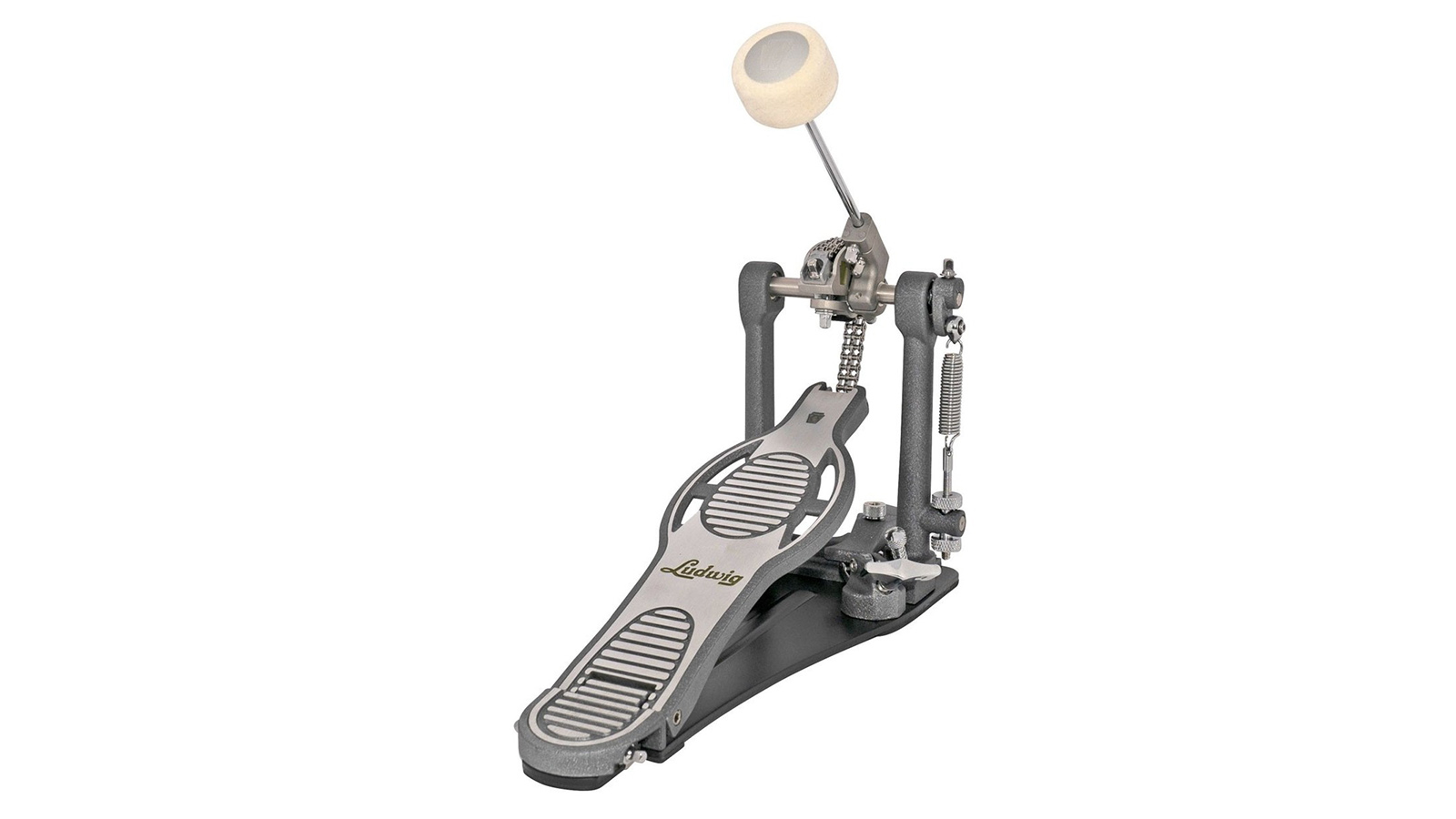
11. Ludwig Speed Flyer bass drum pedal
Our expert review:
Specifications
Reasons to buy
Reasons to avoid
Ludwig’s iconic Speed King pedal was reissued for 2020, quickly followed by the streamlined Speed Flyer. While it’s based on its iconic forefather, the Speed Flyer boasts a multitude of modern enhancements. Retro visual hallmarks of the original pedal remain, but this is very much a tool for the modern player. Upgrades from the original include an improved heel with smooth action bearings, a stronger and enlarged baseboard for enhanced stability and strength, and an anti-slip cam to ensure you never miss a beat.
The Speed Flyer offers greater adjustment than the Speed King, too. From spring tension to cam angle and footboard height, it’s a tweaker’s delight. The Speed Flyer is a burlier pedal, sure, but these welcome modern attributes take nothing away from the speed and performance. And for the completists Ludwig has even added a drum key attachment.
Best bass drum pedals: Buying advice
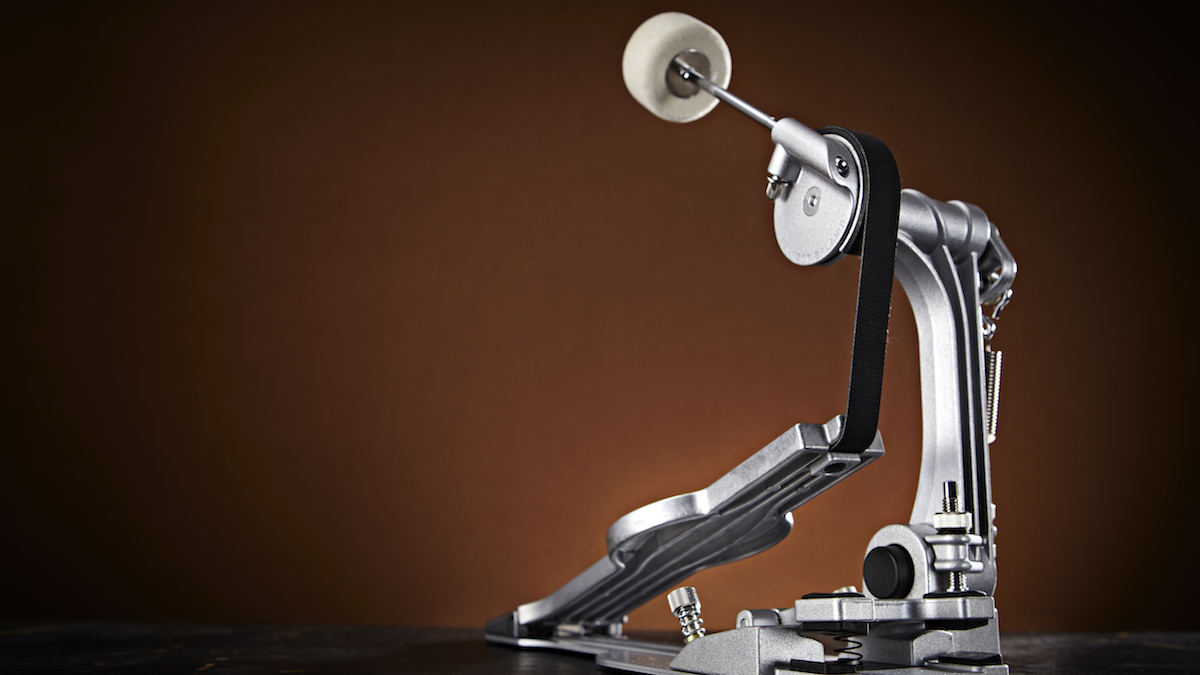
Do you need a single or double bass drum pedal?
Knowing whether you need a single or double kick pedal can be a difficult choice to make. If you're struggling to decide, then there are a few things you should take into consideration.
First of all, what music are you playing? While double kick techniques can be employed in any styles of playing, most double players need their extra pedal to help them sustain bass drum speed for more extreme genres like metal and thrash. If you really don't need that, then maybe a double pedal is overkill. That being said, you can do everything that you'd do with a single pedal with a double pedal, too - so if you'd like the extra flexibility, then a double bass drum pedal is perfect.
Ergonomics is something you should consider too. In some of our own personal experiences, we've found that a left-hand-side bass drum pedal can interfere with hi-hat pedal placement. If you're someone who always plays with the hi-hats open or closed, then it's no big deal - but if you're someone who uses their hi-hat pedal on a regular basis, then it's worth thinking about. Are you prepared to compromise on your hi-hat placement for something you'll only use sporadically?
Almost all of the pedals in our guide are available in both configurations, including double pedal orientations for left-footed players - so your amount of choice is surprisingly vast.
What bass drum pedal drive options are there?
With the single or double question answered, your next choice is the drive type. This part attaches the footplate to the beater cam and therefore has an effect on how energy is transferred when you depress the footplate. Drives types fall into three main categories: chain, belt or direct-drive. Chains are the most common on modern pedals, often featuring dual-chains for increased durability.
Belt-driven pedals do the same job, and were the standard in early bass drum pedal design, offering less flex than a chain for a more consistent motion with less loss of momentum. Older belt designs were more fragile and prone to wear or even snapping, while modern-day equivalents are often made from stiff kevlar, making them quite literally bulletproof.
Finally, direct drive pedals feature a solid linkage for the most efficient transfer of energy, and in many players’ minds, have a light feel that allows for speedy playing - something to consider if you play faster styles such as metal or punk.
Spring theory
MusicRadar's got your back
All bass drum pedals use a spring to return the beater to its playing position once it has struck the head. While this isn’t an option in itself, the spring tension on your pedal will affect the feel of the pedal, perhaps more than any other part.
If your spring tension is higher, then you'll achieve a faster rebound - but this comes with the trade-off of needing more effort to get the pedal moving in the first place. If you want super-fast rebound, then you should look out for a pedal with the ability to set the spring at a higher tension. Some companies even offer replacement springs of different tensions for this sole reason.
What bass drum pedal cam types are there?
The next thing to consider is the cam type. These come in two main forms – linear or offset. Linear cams are perfectly round, and will throw the pedal at an even and consistent rate throughout the travel of your bass drum stroke.
Meanwhile an offset cam will pull the beater towards the head in the final swing of its travel. This means you’ll get the pedal moving with a lighter feel, without losing a weighty attack as the beater rotates towards the head: an additional power boost for no extra effort. Some pedals come with interchangeable or reversible cams so you can try both options and find the right one for you.
Footboards and bass drum beaters
Finally, you’ll be met with different footboard lengths and beater options. Bass drum pedals that utilise a longer footboard are more comfortable for players with bigger feet, and while it’s possible to employ specialist swivel and heel-toe techniques on any pedal, many players prefer the extra playing surface and potential leverage that a longboard provides.
Your beater, meanwhile, is the easiest and cheapest replacement to make on your pedal, and comes in a range of materials (felt, plastic, wood etc) and profiles (round, flat, ridged). Most modern bass drum pedals include a multi-surface beater – at the very least you’ll find felt on one side for a softer attack, and plastic on the other for added ‘click’ on your notes.
Others go as far as offering four different sides to give you options for material and profile, as well as moveable weights to vary the feel of the beater throw. The shape, weight and material of the beater will have an impact on how your pedal feels, but we would suggest focussing on the other main areas first, as beaters can be quickly swapped for a different style if you need to. In fact, many drummers keep multiple beater types to hand depending on the style of music they’re playing and the feel they’re going for.
How we chose the best bass drum pedals for this guide
Here at MusicRadar, we are experts in our field, with many years of playing, creating and product testing between us. We live and breathe everything music gear related, and we draw on this knowledge and experience of using products in live, recording and rehearsal scenarios when selecting the products for our guides.
When choosing what we believe to be the best bass drum pedals available right now, we combine our hands-on experience, user reviews and testimonies and engage in lengthy discussions with our editorial colleagues to reach a consensus about the top products in any given category.
First and foremost, we are musicians, and we want other players to find the right product for them. So we take into careful consideration everything from budget to feature set, ease of use and durability to come up with a list of what we can safely say are the best bass drum pedals on the market right now.
Find out more about how we test music gear and services at MusicRadar.
Related buyer's guides
- Find your voice with one of the best snare drums
- Plug into the best electronic drum sets you can buy
- Just starting out? These are the best beginner electronic drum sets
- On a budget? Explore the best beginner drum sets around
- Need new metals? Start with our guide to the best cymbals
- The best electronic drum pads: percussion pads for the studio and stage
- Show the drummer some love with these gifts for drummers
Get the MusicRadar Newsletter
Want all the hottest music and gear news, reviews, deals, features and more, direct to your inbox? Sign up here.

I'm a freelance member of the MusicRadar team, specialising in drum news, interviews and reviews. I formerly edited Rhythm and Total Guitar here in the UK and have been playing drums for more than 25 years (my arms are very tired). When I'm not working on the site, I can be found on my electronic kit at home, or gigging and depping in function bands and the odd original project.
“A pedal that sings with harmonic richness and blooming touch response”: Tone King offers up boutique tube amp tones for your pedalboard with the Imperial Preamp
“Each and every unit is perfectly dialled in to the 'sweet spot' that can be so elusive to find in vintage pedals”: Pigtronix’s Gas Giant is a high-gain fuzz pedal with a FET-driven onboard noise gate